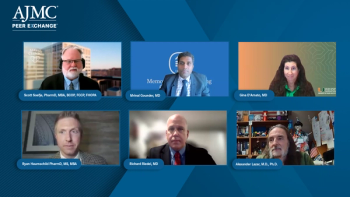
MACRA 2.0 and Beyond: Preparing Your Practice to Meet the Quality and Reporting Challenges
At the 2017 American Society of Clinical Oncology Annual Meeting, oncologists heard from fellow experts on the best way to navigate this daunting payment reform challenge.
Whether or not oncologists want to, CMS’ new payment model, the Medicare Access and CHIP Reauthorization Act (MACRA), is now live. MACRA replaced the Sustainable Growth Rate formula through the
The learning objectives of the session included the practice impact of MACRA, quality reporting and/or APM options under MACRA, and the impact of APMs on the Medicare.
Blase N. Polite, MD, MPP, associate professor of medicine, The University of Chicago, explained the 2 choices that practices have under QPP: MIPS and APMs. “There are no fully blessed oncology payment models yet, unless you choose the 2-sided risk model offered under the Oncology Care Model (OCM),” Polite said. This provided impetus for ASCO to develop its own APM, he explained.
In 2017, which is the first performance period, MIPS incorporates scores for quality, advancing care information (ACI), and improvement activities (IA), Polite said. “Cost, unfortunately, was not included in the 2017 MIPS program score,” Polite said, but will find a place in the 2018 scores.
Payment, he explained, will be based on where a practice falls along the range of low to high performers, compared with the National Median Composite Score. The 2019 scores are based on 2017 performance. A significant chunk (60%) of the score is driven by quality reporting, formerly known as the Physician Quality Reporting Score.
While the general oncology measures set includes 19 reportable measures that are a mix of process and outcome measures, reporting requirements mandate only 6 measures, at least 1 of which should be a outcome/high-priority measure, Polite said. Further, the practice is expected to report on at least 50% of patients eligible for each measure in 2017, which includes both Medicare and commercially insured patients.
Explaining the cost reporting basics, Polite said that the per capita cost measures will be risk-adjusted by specialty. It currently includes 41 episode measures, none of which are oncology-related. The measures include the cost of Medicare Part B drugs, while Part D drugs have been excluded.
“CMS is still working with issues such as defining an episode, and ASCO is working with CMS to provide feedback and help develop the reimbursement model,” Polite told the audience.
He went on to urge the oncologists in the room to take concrete steps to work with CMS on QPP reporting, although in 2017, CMS has allowed practices to “pick their pace.” The options that are available include:
- Practices that don’t participate in the QPP reporting program in 2017 will see a negative 4% payment adjustment in 2019.
- Practices that test the program and report 1 quality measure or IA or the required ACI measures (which, Polite said should be the least a practice should do in 2017) can avoid penalties in 2019.
- If the practice is involved in partial MIPS reporting in 2017, meaning it reports on more than 1 quality measure, or IA or more than the required ACI, it can avoid penalties and be eligible for partial positive payment adjustment in 2019.
- Practices that take on full MIPS reporting in 2017 can avoid penalties and be eligible for partial positive payment adjustment as well as an exceptional performance bonus in 2019.
Barbara McAneny, MD, provided a historic perspective on the evolution of payment models, showing the top-down versus the bottom-up models, which are payer-driven and provider-driven, respectively. The provider-driven model, where the practice identifies problems that lead to changes with the way payers pay for care, is more patient-centric and is geared to reduce financial toxicity for patients.
“We looked at things in our clinic that we can influence, such as hospital admission and triage to manage toxicities and avoiding sending the patients to the emergency room,” McAneny said, and that resulted in the COME HOME
Another payment model that stemmed out of a collaboration between McAneny’s Innovative Oncology Business Solutions and ASCO is the Patient-Centered Oncology Payment Model (PCOP) model. In a recently published
What PCOP aims to achieve is,
- Reduce avoidable readmissions
- Ensure the practice follows appropriate use criteria for drugs, tests, and imaging
- The practice receives higher payments than existing reimbursement margins
The pilot, to data has seen,
- 11 total hospitalizations (4.1% monthly hospitalization rate)
- 41 triage encounters, with 18 same-day appointments and 3 emergency department visits avoided
- 142 active chemotherapy months, with a 92.2% pathways complians
McAnany shared her worry with the 2-sided risk offered under OCM. Her practice ran a simulation using 290000 episodes from COME HOME and then randomized them. “We found that our COME HOME practice, even with all its transformations and efficiencies, has only a 3% chance of making any money.” The patient population is too small to meet the actuarial risk associated with these payment models.
“I am even concerned with taking 1-sided risk with these APMs,” McAneny said. “We need to talk to CMS to devise a more realistic system and develop targets that we can achieve.”
Newsletter
Stay ahead of policy, cost, and value—subscribe to AJMC for expert insights at the intersection of clinical care and health economics.






































